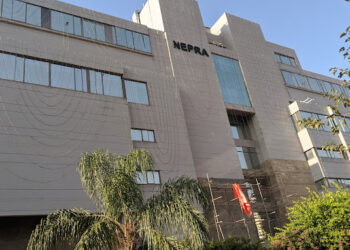ISLAMABAD – The National Electric Power Regulatory Authority (NEPRA) has projected a modest 2.8% growth in electricity demand for the fiscal year 2025-26, significantly lower than the 5% forecast made by the Central Power Purchasing Agency-Guaranteed (CPPA-G). This projection is based on recent trends of stagnant or declining demand, as actual generation data for the last two fiscal years showed either negative or flat growth.
In its latest determination, NEPRA has approved a projected average Power Purchase Price (PPP) of Rs 25.06 per unit for FY 2025-26. This estimate is based on several macroeconomic assumptions, including an exchange rate of Rs 290/USD, low hydrology, US inflation at 2%, KIBOR at 11%, and Pakistan’s inflation at 8.65%.
NEPRA acknowledged that although CPPA-G initially based its forecast on an exchange rate of Rs 280/USD, the Federal Government’s budgetary estimates and prevailing market conditions justify the use of Rs 290/USD. As the majority of power generation costs are dollar-indexed, exchange rate fluctuations have a direct impact on electricity prices.
For the coming fiscal year, the total projected power purchase cost for distribution companies (XWDISCOs), excluding K-Electric, is estimated at Rs 3,066 billion. This includes Rs 1,125 billion in fuel and variable costs and Rs 1,940 billion in capacity charges, translating to a per unit cost of Rs 26.34 before adjusting for transmission and distribution losses. Capacity charges alone account for 63% of the total cost.
NEPRA expressed concerns over CPPA-G’s higher growth assumptions, noting that actual grid-based electricity generation from July 2024 to April 2025 was 5.4% below projections. For FY 2025-26, NEPRA considers a 2.8% growth scenario more realistic, factoring in the expected shift of captive power users to the national grid, revisions in net metering policy, and gradual economic recovery.
The Authority also adjusted KIBOR projections from 11.90% to 11%, citing the current 3-month KIBOR rate of 11.15% as of June 11, 2025, and a stable macroeconomic outlook.
NEPRA emphasized the importance of realistic assumptions in forecasting, especially as exchange rate parity and capacity payments remain critical cost drivers in Pakistan’s power sector. With over 90% of electricity costs linked to generation, the accuracy of exchange rate and interest rate projections has significant implications for end-user tariffs.
Ends
NEPRA reduces national average tariff by 4% for FY 2025-26
ISLAMABAD : The National Electric Power Regulatory Authority (NEPRA) has reduced the national average electricity tariff for FY 2025–26 by...
Read more

